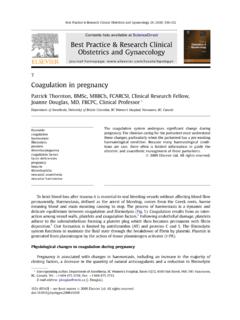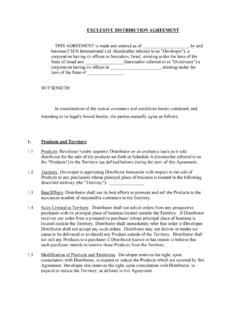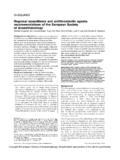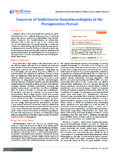Transcription of Anesthetic Concerns in Patients Presenting with Renal Failure
1 Anesthetic Concernsin PatientsPresenting withRenal FailureGebhard Wagener,MDa, Tricia E. Brentjens,MDa,b,* Renal PHYSIOLOGYThe foremost function of the kidneys is to maintain fluid and electrolyte balance, bya tightly controlled system that is able to maintain homeostasis even in perilous meta-bolic situations. Other tasks include the excretion of metabolic waste products,control of vascular tone, and regulation of hematopoesis and bone kidneys are the best-perfused organ per gram of tissue and receive 20% of thecardiac output. Global Renal blood flow is autoregulated and is kept constant ata mean arterial pressure of 50 to 150 mm Hg in normotensive flowto the glomerulus is regulated through the afferent and efferent sphincters, whichadjust the glomerular filtration pressure.
2 Depending on this filtration pressure a largeamount of fluid (approximately 120 mL/min) is filtered into the capsular space of theBowman capsule and then into the tubuli. Most of this glomerular filtrate is reabsorbedin the distal tubules of the inner medulla: active adenosine triphosphate (ATP) pumpsmove NaCl into the interstitium while water follows passively across an osmolargradient. Urine and plasma osmolality are regulated by the feedback mechanism ofthe loop of Henle: increased interstitial NaCl concentrations (ie, as a result of hypovo-lemia) lead to an increased reabsorption of water and a decrease in urine blood flow is heterogenous.
3 The Renal cortex receives approximately 90% ofrenal blood flow, whereas the metabolically active Renal medulla receives only aboutaDivision of Vascular Anesthesia and Division of Critical Care, Department of Anesthesiology,Columbia University, 630 West 168th Street, New York, NY 10032, USAbPost Anesthesia Care Unit, New York Presbyterian Hospital, Presbyterian Campus, New York,NY, USA* Corresponding author. Department of Anesthesiology, Columbia University, 630 West 168thStreet, New York, NY Renal function Acute kidney injury Anesthesia Renal failureAnesthesiology Clin 28 (2010) 39 54 $ see front matter 2010 Elsevier Inc.
4 All rights Tissue PO2is 50 to 100 mmHg in the cortex, whereas it can be as low as 10 to15 mmHg in the medullary thick ascending limb. The Renal medulla extracts 79% ofdelivered oxygen compared with only 18% in the Renal cortex, which renders the renalmedulla extraordinarily sensitive to response to hypotension, systemic activation of the sympathetic and adrenalsystems leads to redistribution of Renal blood flow within the kidneys preferentiallytoward the metabolically active medulla and inner there is a preserva-tion of glomerular filtration rate (GFR) and Renal function, but with prolonged or moresevere ischemia, active NaCl pumps in the thick ascending limb break down andsodium reabsorption decreases.
5 Chemoreceptors in the macula densa of the juxtaglo-merular apparatus detect the increased intraluminal chloride concentration andrelease renin. Renin then causes constriction of the afferent arteriole and a dramaticdecrease of GFR that leads to a further reduction of urine output and oliguric renalfailure ensues. Without the feedback mechanism of the macula densa, GFR wouldremain high (120 mL/min), water could not be reabsorbed, and fatal dehydration wouldoccur within kidneys are able to tolerate substantial insults while maintaining adequate func-tion despite this theoretic vulnerability to ischemia.
6 Multiple and severe insults arerequired to cause an injury severe enough to manifest a clinically relevant decreaseof Renal function (Fig. 1). The most common cause of perioperative Renal injury isischemia-reperfusion injury. Ischemia-reperfusion injury causes tubular necrosis andapoptosis, especially of the medullary thick ascending loop of Henle. During reperfu-sion there is an influx of proinflammatory cells, neutrophils, and macrophages, whichcardiac surgery-ComplementInflammation-Cytokines -Inflammatory cells-AntibodiesNovel Biomarker DevelopmentIschemic Injury-Microvascular-EmbolicRecognitionI ncreased CrLow Urine OutputAdded Insults-Drugs-SepsisRRTD eathNeurohumoral ActivationHemodynamic InfluencesCardiac output, Systemic Pressure.
7 Venous PressureTrans- Renal GradientPulsatility of FlowPreop-eGFR-Age-DM-EF-Contrast-Planne d-OperationOxidative StressCellular InjuryCell DeathLoss of Funcational Nephron UnitsOrgan Dysfunction-Tubular-GlomerularApoptosisF ig. factors, mechanisms of injury and means of detection for AKI in relation tocardiac surgery. (FromBellomo R, Auriemma S, Fabbri A, et al. The pathophysiology ofcardiac surgery-associated acute kidney injury (CSA-AKI). Int J Artif Organs 2008;31:167; with permission.)Wagener & Brentjens40release cytokines and radical oxygen species that further amplify necrosis addition to direct injury, Renal tubules become obstructed by insults caused by calcineurin inhibitors or aminoglycosides havea similar clinical presentation as ischemia-reperfusion injury even though the mecha-nism of injury is different.
8 Calcineurin inhibitors cause profound afferent arteriolarvasoconstriction and decrease GFR,6whereas aminoglycosides cause tubular celldamage after reuptake into proximal tubular cells by megalin agents inhibit prostaglandin synthesis, which alone does not causerenal injury in normal subjects. In the setting of hypovolemia or in addition to othernephrotoxic insults, nonsteroidal antiinflammatory drugs may convert a small renalinjury into overt Renal Failure as prostaglandin synthesis is essential to dilate theafferent arteriolar sphincter and maintain can cause Renal injury,as it induces medullary vasoconstriction through activation of adenosin/endothelinreceptors as well as by a direct cytotoxic effect of the high osmolality of resultant clinical presentation is similar to ischemia-reperfusion injury.
9 Although usually a single insult with radiocontrast is not sufficient to induce clinicallyovert acute kidney injury (AKI).10 AKIAKI often results from multiple insults and is frequently a consequence of a combina-tion of prerenal azotemia and intrarenal acute tubular necrosis. In acute Renal failurerenal function deteriorates over hours or days. Primary Renal diseases such as glomer-ulonephritis are rare in surgical populations and often associated with severe protein-uria and nephritic syndrome. Treatment of nephritic syndrome consists ofreplacement of protein loss and diuresis, steroids, and other immunosuppressivedrugs that may reverse the azotemia may be caused by Renal calculi, tumors or even a blocked Foleycatheter and rapid recovery of Renal function will occur if the obstruction is removed orbypassed expeditiously.
10 Iatrogenic injury of the ureter may occur during lower abdom-inal surgery, and the diagnosis of a dilated Renal collecting system either by computedtomography scan or ultrasound should prompt rapid placement of either ureteralstents or nephrostomy tubes to relieve the pressure and avoid further, potentially irre-versible injury to the prerenal azotemia and acute tubular necrosis caused by medullaryischemia are two ends of a continuum. Prerenal azotemia is common and a physiologicresponse to hypovolemia. It increases tubular workload and decreases medullaryblood supply. Any additional Renal insult may result in sufficient medullary ischemiato cause acute Renal Failure .










